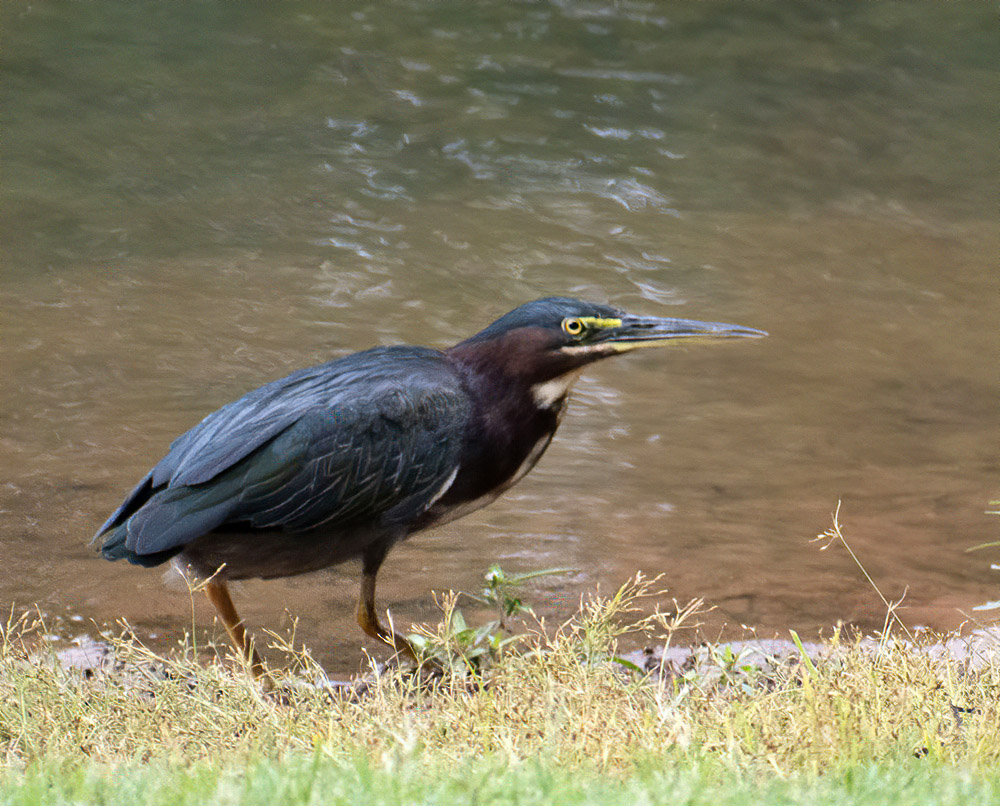By Grace Huffman

It may be fall, but I just have to write about one of my favorite summer birds: the Green Heron. Seen here in central Oklahoma until late October, I most recently saw one a couple of weeks ago (as of this writing) while birding in the area around Mitch Park.
Green Herons are one of my favorite birds because I think they look quite goofy. They’re small, stocky herons that often like to hold their heads so close to their bodies they look like they have no neck. They are a dark green-gray on the back, and rusty on the front. Add on their bright orange or yellow eyes, and that completes the funky look.
These herons arrive here in early April, where they spend their days along the shores of lakes, ponds, marshes, and the like. They tend to stay right at the edge of the water hunting fish, unlike their larger cousins who wade in deeper. Because they like to stay so close to the shore, they can be hard to see amongst the grasses and other aquatic plants growing at water level.
During the breeding season, males choose the nest site within their territory, a secluded place that may be overhanging the water, but once he gets it started the female then finishes the nest. Here the female lays her clutch of 3-5 eggs, where she incubates them for up to 3 weeks.
Then it’s another 2 1/2 weeks before the young leave the nest. In places where it’s warm enough, they may even raise a second brood.
The one I saw near Mitch Park I initially thought was a piece of trash on first glance, but on closer inspection I could see the dark back and top of the head. Even then, it took me a few seconds to realize that it wasn’t some strange crow and was in fact a Green Heron. It didn’t look like a typical heron as it kept itself very compact, and it did indeed appear like it had no neck. The bird was fascinating to watch as it stalked along the shore of the pond, where it even caught a small fish. This was one of the rare times I got to actually enjoy looking at the bird, as most of the time when I see Green Herons they are flying, so I’m not able to get much more than an identifying look.
Green Herons are highly intelligent, so much so that they are one of the few known birds to use tools. When hunting, it will use insects, plant bits, and even bread crusts to bait the fish into coming to the surface so the heron can catch lunch! The one at Mitch Park seemed pretty adept at catching his food without the use of tools though. Another interesting fact: according to allaboutbirds.org, the oldest known Green Heron was at least 7 years and 11 months old when it was found in Mexico. It had initially been banded here in Oklahoma.
While common (although hard to see at times), Green Herons are in decline. While they were hunted as food in the past, today the likely reason is habitat loss as humans develop the ponds and other bodies of water where they frequent.
